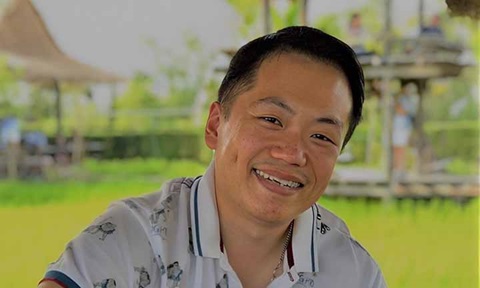Small classes, tolerant environment: Former GEP teachers and students remember the programme
SINGAPORE – War games where pupils solved maths problems to win territory from one another, and “missions” where they posed as secret agents infiltrating enemy bases to defuse threats.
These are some of the ways former Gifted Education Programme (GEP) teacher Raymond Poon, 47, engaged his pupils and sought to grow non-academic qualities like leadership and teamwork.
He would appoint “commanders” from a class of about 20 to 25 primary school boys, and let them sort out how best to organise themselves to accomplish the task, while throwing them pointers and extra challenges along the way.
These extra lessons were made possible by the GEP, as its structure gave him the time and space to focus on enrichment beyond the regular curriculum, he said.
Mr Poon, who is now a private tutor and adjunct teacher, said: “As a GEP teacher, having smaller class sizes, fewer teaching periods and motivated students meant that I had the bandwidth to plan these special lessons.
“In a mainstream classroom with almost 40 pupils and a lot of other responsibilities, it is very difficult to plan and execute such things.”
Former pupils and teachers from the GEP said these advantages made for a programme which was enriching, nurturing and tolerant, but at the same time, could also be a pressure cooker.
The extra lessons were made possible by the GEP.
Consultant Emily Goh, 28, who as a pupil transferred to Raffles Girls’ Primary School from St Anthony’s Canossian Primary for the GEP, said it exposed her to a wide range of knowledge, sparking a lifelong interest in mathematics, which she pursued all the way to university.
She said: “The difference from mainstream classes was immediately apparent. We had a lot of electives and options to do programmes on topics like future problems to solve or the weather.”
The programme exposed her to alternative ways of thinking about maths through things like puzzles and number sequences, and was focused on facilitating pupils in leading independent exploration into topics they were interested in, which set her up well for further studies and working life, she said.
The GEP also cultivated a tolerant environment where teachers were able to help pupils navigate socio-emotional issues as well as academic ones, said lawyer and playwright Amanda Chong, 35.
Ms Chong, who was also in the GEP at Raffles Girls’ Primary, said: “Looking back, some of my classmates in the programme would possibly be considered neurodivergent, but we did not have the language to talk about it back then.”
“Neurodivergent” is a term which describes a person whose brain functions differently from a typical person, and broadly covers some conditions such as autism spectrum disorder and attention-deficit hyperactivity disorder.
Many of her GEP classmates would have been considered ill-mannered in a mainstream classroom back in the 1990s, Ms Chong said, when knowledge of such conditions was less widespread, as they would often exhibit behaviour like rocking back and forth in their chairs to help them pay attention.
She said: “In the GEP, there was a very low level of judgment (of such things), and people wouldn’t make fun of you – teachers and peers were very accepting.”
Former GEP teacher Raymond Poon created lessons mimicking war-games where pupils solved maths problems to win territory from each other.
But along with the enrichment came an increased level of academic pressure. National Institute of Education researcher Johannis Auri Aziz said the GEP workload was extremely high and he was extremely stressed.
Speaking as an alumnus, Dr Johannis said: “One of the contradictions in the GEP, I felt, is that while you receive a lot of enrichment, at the end of the day you still had to sit the PSLE and O levels.
“And there was a lot of pressure from parents and teachers to do well. Because it doesn’t look good if you do not do well when you are supposed to be the top 1 per cent.”
Read the original article here.
Source: The Straits Times © SPH Media Limited. Permission required for reproduction.





.tmb-listing.jpg?Culture=en&sfvrsn=13b00373_1)

.tmb-listing.jpg?Culture=en&sfvrsn=15e6d6d7_1)